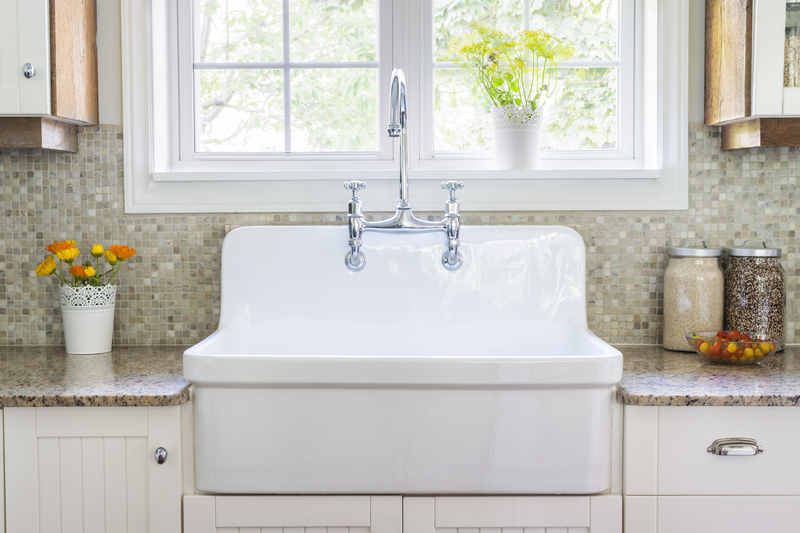Top Strategies for Effortlessly Removing Burnt-on Stovetop Debris
Posted on 25/05/2025
Top Strategies for Effortlessly Removing Burnt-on Stovetop Debris
A sparkling clean stovetop isn't just essential for kitchen aesthetics—it also supports kitchen hygiene and safety. However, burnt-on stovetop debris can be incredibly stubborn, making your cooking space look messy and uninviting. Whether you're dealing with a glass cooktop, an electric stove, or a classic gas range, knowing the best methods for removing burnt messes can save you time, effort, and even money on repairs. In this comprehensive guide, you'll discover top strategies for removing burnt-on stovetop debris effortlessly, restore shine, and keep your kitchen looking its best.

Understanding Burnt-on Stovetop Debris
Before jumping into the cleaning methods, it's vital to understand what causes debris to become so hard to remove. Burnt-on residue happens when food or liquid spills over during cooking and is "cooked" onto the surface at high temperatures. Over time, layers of carbonized food, grease, and sugar further adhere to the stovetop, becoming more difficult to clean, especially if left for too long.
- Sugar-based spills harden quickly and can damage surfaces if not addressed.
- Grease splatter can become sticky and attract dirt and dust, increasing buildup.
- Dairy and starch easily burn and create challenging crusts to remove.
Preparation: Safety and Supplies
When tackling burnt-on debris on your stovetop, always prioritize safety and have your cleaning supplies ready.
Essential Cleaning Supplies:
- Baking soda
- White vinegar
- Lemon juice
- Dish soap
- Plastic or silicone scraper (never metal, to avoid scratches)
- Non-abrasive sponge
- Microfiber cloths
- Protective gloves (optional, especially for sensitive skin)
Safety First:
- Ensure the stovetop is completely cool before cleaning.
- Unplug electric stovetops or turn off the gas for gas ranges.
- Ventilate the kitchen when using strong-smelling products.
The Best Strategies for Removing Burnt-on Stovetop Debris
Let's delve into multiple approaches, from quick degreasing techniques to powerful deep-cleans, ensuring you'll have the perfect solution for every stovetop disaster.
1. The Power of Baking Soda and Vinegar
For most cooktop surfaces, a baking soda and vinegar paste is the gold standard. It's non-toxic, budget-friendly, and highly effective at lifting stubborn, burnt debris.
- Sprinkle baking soda generously over the stained areas.
- Spray or drizzle white vinegar over the baking soda. Watch for gentle fizzing—that's the reaction working to lift grime.
- Let the mixture sit for 15-30 minutes to break down the burned residue.
- Use a non-abrasive sponge or soft brush to scrub gently in circular motions.
- Wipe clean with a damp microfiber cloth and buff for shine.
Tip: For extra stubborn spots, cover the paste with a damp, warm towel and let it sit longer before wiping away.
2. Harnessing the Steam-Cleaning Method
If you're looking to remove burnt-on stove debris without chemicals, steam is your secret weapon. This method loosens even the most baked-on messes.
- Fill a heat-proof bowl with water and a splash of lemon juice (for deodorizing power).
- Boil on the stovetop for several minutes, allowing steam to loosen residues.
- Turn off the stove and let the surface cool slightly but remain warm.
- Wipe away softened debris with a sponge or microfiber cloth.
This strategy is especially ideal for glass and ceramic cooktops, as it won't scratch delicate surfaces.
3. Commercial Stovetop Cleaners
When natural remedies aren't cutting through the grime, try specially formulated stovetop cleaning products. These cleaners are designed to breakdown and lift burnt-on food and grease without damaging your appliance.
- Follow the manufacturer's instructions carefully for application and timing.
- Use a soft cloth or sponge to distribute the cleaner and scrub away build-up.
- Rinse thoroughly to remove any cleaner residue—especially important for food-prep surfaces.
Note: Always check that your chosen cleaner is compatible with your stovetop material. Avoid harsh abrasives and bleach-based products on glass or ceramic surfaces!
4. The Plastic Scraper Solution
For hardened, stubborn clumps of burnt food, sometimes a gentle scrape is warranted. A plastic or silicone scraper, designed for stovetops, safely removes stuck-on bits without scratching or chipping the cooktop.
- Work slowly and carefully—don't force the scraper under debris.
- Try soaking the debris first with warm, soapy water for a few minutes to soften it.
- Hold the scraper at a low angle and slide it beneath the residue to gently lift it away.
- Finish by wiping the area clean with a damp cloth.
This strategy is particularly effective for glass and ceramic stovetops that develop hard-shell burnt spots.
5. Dish Soap and Hot Water Routine
For everyday maintenance or tackling smaller spills before they become burnt-on nightmares, hot soapy water is a reliable ally.
- Mix a few drops of high-quality dishwashing liquid with hot water in a bowl.
- Dip a sponge or soft cloth in the mixture and apply to the affected area.
- Allow it to soak for 5-10 minutes to break down the debris.
- Scrub gently in small circles and wipe clean.
Repeat as necessary for sparkling results, and regularly maintain the stovetop to prevent stubborn build-up.
Advanced Tips for Glass, Ceramic, and Stainless Steel Stovetops
Different stovetop materials require unique care to avoid scratches or other damage. Here are some burnt-on debris removal tips specifically tailored for common surfaces:
Glass and Ceramic Cooktop Care
- Never use steel wool or abrasive pads.
- Dedicated glass cooktop creams can restore shine and gently remove stains.
- Use a razor blade scraper – only if specified safe by the stove manufacturer – at a very shallow angle, applying minimal pressure.
- Always finish with a microfiber cloth to buff away any streaks.
Stainless Steel Stovetop Solutions
- Clean with the grain of the steel to avoid scratches.
- Apply a baking soda paste for tough spots, let sit, and then gently scrub.
- Dry thoroughly to prevent water spots and rust.
- Use a commercial stainless steel cleaner for a streak-free finish.
Natural Remedies for Stuck-On Stove Spills
If you prefer a natural approach, many household ingredients double as powerful burnt-on debris removers:
- Lemon juice: The citric acid breaks down organic stains and adds a fresh scent.
- Vinegar: Cuts through grease and lifts burned residue with ease.
- Hydrogen peroxide and baking soda: Combine into a paste for a fizzing, stain-lifting action—most effective on white stovetops.
Tip: Always rinse the stovetop thoroughly after any natural treatment to remove lingering odors or stickiness.
Preventing Burnt-on Stovetop Debris
While these methods restore your stovetop's original shine, it's best to prevent messes before they happen. Here are some proven strategies to prevent burnt-on stovetop debris:
- Wipe spills immediately: Clean up drips and boils-over while the surface is still warm (but not hot!), using a damp cloth.
- Use drip pans or burner liners under pots and pans, especially when frying or boiling over-prone foods.
- Regularly deep-clean once a week, even if the stove looks clean, to prevent invisible build-up.
- Pay attention to pot sizes; using cookware that's too small or too large can cause spills and burning of excess drips.

Frequently Asked Questions: Removing Burnt-on Debris from Your Stovetop
Can I use oven cleaner on my stovetop?
It is not recommended to use oven cleaner on most stovetop surfaces, particularly glass or ceramic cooktops. These cleaners are caustic and can cause damage or discoloration. Always stick to products approved for stovetop use.
How do I avoid scratching my stovetop?
Always use soft, non-abrasive tools and cloths. If scraping is necessary, stick to plastic or silicone tools specifically made for stovetops, and avoid harsh chemicals or gritty powders.
What if there is a lingering burnt smell?
After cleaning, simmer a mix of water and lemon slices on the stove for several minutes, or wipe the surface with a towel dampened with white vinegar to neutralize odors.
How often should I clean my stovetop to prevent burnt-on debris?
Aim for daily light cleaning and a deep-clean at least once a week. Frequent maintenance stops debris from accumulating and toughening over time.
Conclusion: Achieve a Spotless Stovetop with These Simple Debris-Removal Strategies
Achieving a clean, debris-free cooktop doesn't have to involve hours of scrubbing or harsh chemicals. With these top strategies for removing burnt-on stovetop debris, you can keep your kitchen gleaming, protect your appliance's finish, and maintain a healthier cooking environment. Remember, prevention is key—regular maintenance and quick action on spills are your best lines of defense. But when burnt-on messes do happen, rely on these proven, expert-approved methods for effortless removal.
Share your own stovetop cleaning hacks or questions below, and help others master the art of easy, eco-friendly kitchen cleaning!



